Waking Life
7.8 /10 1 Votes
Duration Country United States | 7.8/10 IMDb Genre Animation, Drama, Fantasy Language English Writer Richard Linklater Language English | |||||||||||||||||||||||||||||||||
 | ||||||||||||||||||||||||||||||||||
Release date January 23, 2001 (2001-01-23) (Sundance)October 19, 2001 (2001-10-19) (United States) Cast (Main Character), (Jesse), (Celine), Ken Webster (Bartender), (One of Four Men), (Interviewed on television)Similar movies Mulholland Drive , Stay , Vivre sa vie , Antonia's Line Tagline Dreams. What are they? An escape from reality or reality itself? | ||||||||||||||||||||||||||||||||||
Waking life 2001 in english full films old cartoon
Waking Life is a 2001 American adult animated docufiction film, directed by Richard Linklater. It is the first animated film released by Fox Searchlight Pictures, and to date is the only animated film released by Fox Searchlight, though will be joined by upcoming stop-motion film Isle of Dogs. The film explores a wide range of philosophical issues including the nature of reality, dreams, consciousness, the meaning of life, free will, and existentialism. Waking Life is centered on a young man who wanders through a succession of dream-like realities wherein he encounters a series of individuals who engage in insightful philosophical discussions.
Contents
- Waking life 2001 in english full films old cartoon
- Plot
- Cast
- Production
- Release
- Reception
- Home media
- Soundtrack
- References

The film was entirely rotoscoped, although it was shot using digital video of live actors with a team of artists drawing stylized lines and colors over each frame with computers, rather than being filmed and traced onto cells on a light box. The film contains several parallels to Linklater's 1991 film Slacker. Ethan Hawke and Julie Delpy reprise their characters from Before Sunrise in one scene. Waking Life premiered at the 2001 Sundance Film Festival.
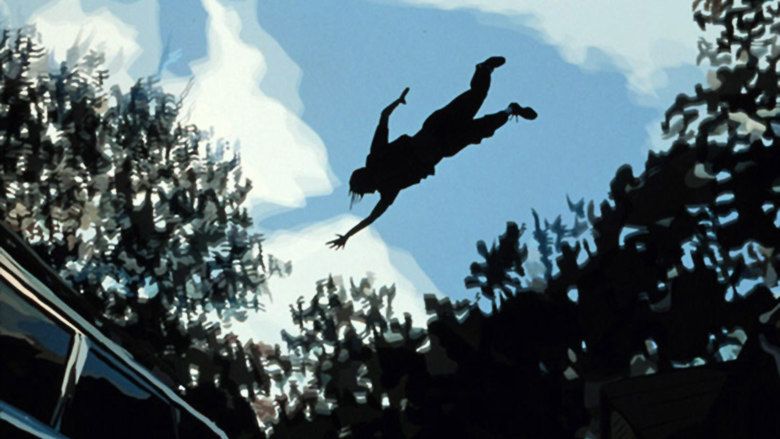
Plot

Waking Life is about an unnamed young man living an ethereal existence that lacks transitions between everyday events and eventually progresses toward an existential crisis. For most of the film, he observes quietly but later participates actively in philosophical discussions involving other characters—ranging from quirky scholars and artists to everyday restaurant-goers and friends—about such issues as metaphysics, free will, social philosophy, and the meaning of life. Other scenes do not even include the protagonist's presence, but rather, focus on a random isolated person, group of people, or couple engaging in such topics from a disembodied perspective. Along the way, the film touches also upon existentialism, situationist politics, posthumanity, the film theory of André Bazin, and lucid dreaming, and makes references to various celebrated intellectual and literary figures by name.
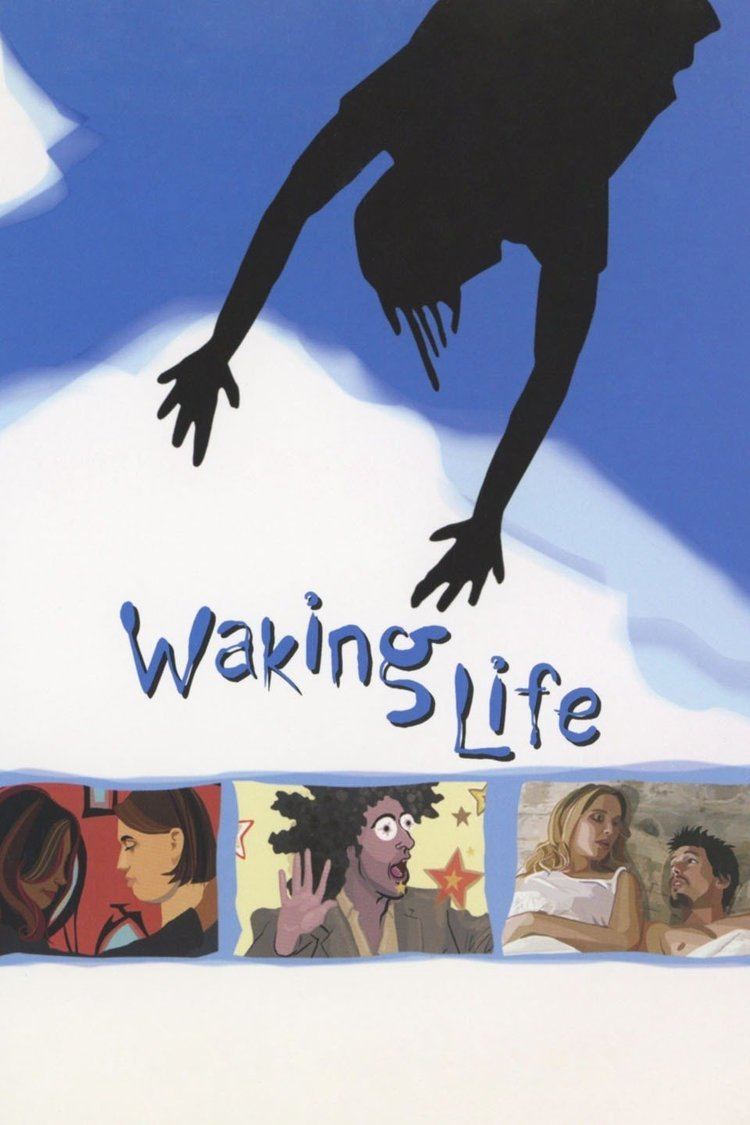
Gradually, the protagonist begins to realize that he is living out a perpetual dream, broken up only by occasional false awakenings. So far he is mostly a passive onlooker, though this changes during a chat with a passing woman who suddenly approaches him. After she greets him and shares her creative ideas with him, he reminds himself that she is a figment of his own dreaming imagination. Afterwards, he starts to converse more openly with other dream characters, but he begins to despair about being trapped in a dream.
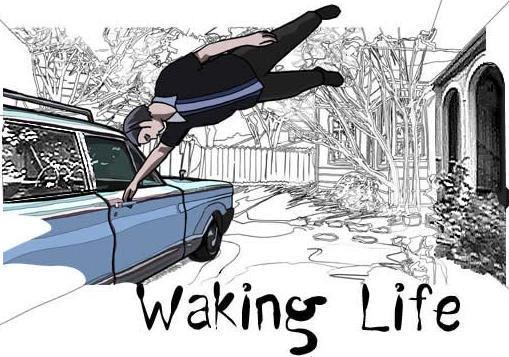
The protagonist's final talk is with a character who looks somewhat similar to the protagonist himself and whom he briefly encountered previously, earlier in the film. This last conversation reveals this other character's understanding that reality may be only a single instant that the individual interprets falsely as time (and, thus, life); that living is simply the individual's constant negation of God's invitation to become one with the universe; that dreams offer a glimpse into the infinite nature of reality; and that in order to be free from the illusion called life, the individual need only to accept God's invitation.
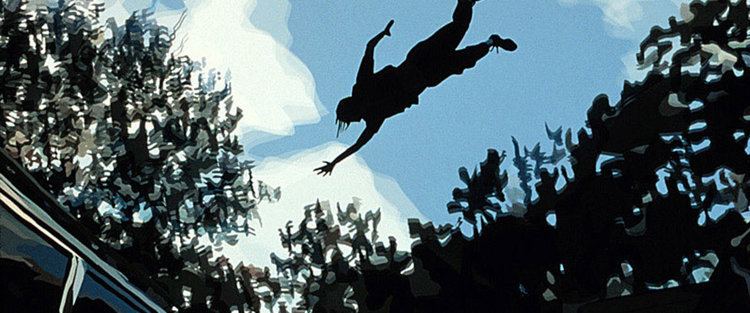
The protagonist is last seen walking into a driveway when he suddenly begins to levitate, paralleling a scene at the start of the film of a floating child in the same driveway. The protagonist uncertainly reaches toward the car's handle, but is too swiftly lifted above the vehicle and over the trees. He rises into the endless blue expanse of the sky until he disappears from view.
Cast

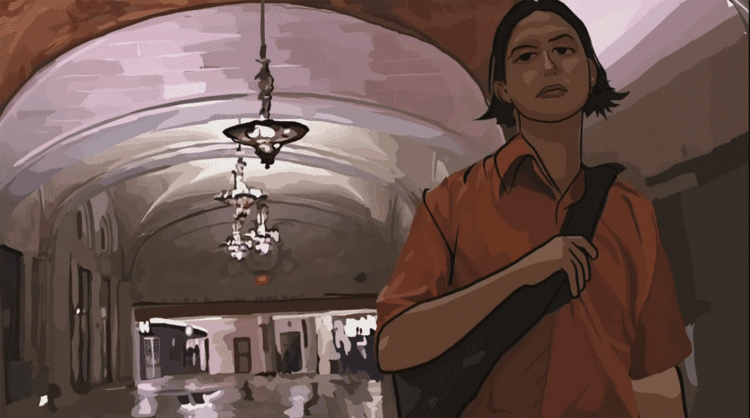
The film features appearances from a wide range of actors and non-actors, including:
Production
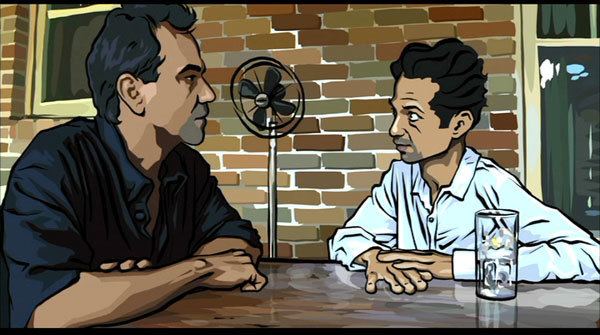
In a 2001 interview Linklater estimated that the idea for the film came "before I was even interested in film, probably 20 years ago". Despite the long gestation process in his head, Linklater noted that before he came up with the idea of rotoscoping the film "didn't quite work" calling it "too blunt, too realistic" stating that "I think to make a realistic film about an unreality the film had to be a realistic unreality".
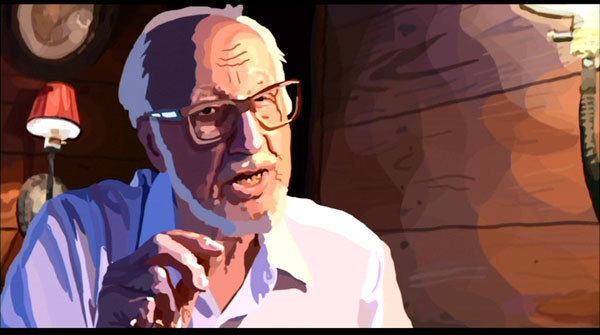
Adding to the dream-like effect, the film used an animation technique based on rotoscoping. Animators overlaid live action footage (shot by Linklater) with animation that roughly approximates the images actually filmed. This technique is similar in some respects to the rotoscope style of 1970s filmmaker Ralph Bakshi. Rotoscoping itself, however, was not Bakshi's invention, but that of experimental silent film maker Max Fleischer, who patented the process in 1917. A variety of artists were employed, so the feel of the movie continually changes, and gets stranger as time goes on. The result is a surreal, shifting dreamscape.
The animators used expensive "off-the-shelf" Apple Macintosh computers. The film was mostly produced using Rotoshop, a custom-made rotoscoping program that creates blends between keyframe vector shapes, which also makes use of virtual "layers", and created specifically for the production by Bob Sabiston. Linklater used this animation method again for his 2006 film A Scanner Darkly.
Release
Waking Life premiered at the Sundance Film Festival in January 2001, and was given a limited release in the United States on October 19, 2001.
Reception
Critical reaction has been mostly positive. It holds a rating of 80% across 137 reviews on review aggregator Rotten Tomatoes — with critical consensus that "the talky, animated Waking Life is a unique, cerebral experience" — and an average score of 82/100 ("universal acclaim") on Metacritic, based on 31 reviews. Roger Ebert of the Chicago Sun-Times gave the film four stars out of four, describing it as "a cold shower of bracing, clarifying ideas". Ebert later included the film on his list of "Great Movies". Lisa Schwarzbaum of Entertainment Weekly awarded the film an "A" rating, calling it "a work of cinematic art in which form and structure pursues the logic-defying (parallel) subjects of dreaming and moviegoing," while Stephen Holden of The New York Times said it was "so verbally dexterous and visually innovative that you can't absorb it unless you have all your wits about you". Dave Kehr of The New York Times found the film to be "lovely, fluid, funny" and stated that it "never feels heavy or over-ambitious".
Conversely, J. Hoberman of The Village Voice felt that Waking Life "doesn't leave you in a dream ... so much as it traps you in an endless bull session". Frank Lovece felt the film was "beautifully drawn" but called its content "pedantic navel-gazing".
Nominated for numerous awards, mainly for its technical achievements, Waking Life won the National Society of Film Critics award for "Best Experimental Film", the New York Film Critics Circle award for "Best Animated Film", and the "CinemAvvenire" award at the Venice Film Festival for "Best Film". It was also nominated for the Golden Lion, the festival's main award.
The film is recognized by American Film Institute in these lists:
Home media
The film was released on DVD in North America in May 2002. Special features included several commentaries, documentaries, interviews, trailers, and deleted scenes, as well as the short film Snack and Drink. A bare-bones DVD with no special features was released in Region 2 in February 2003.
Soundtrack
The Waking Life OST was performed and written by Glover Gill and the Tosca Tango Orchestra, except for Frédéric Chopin's Nocturne in E-flat major, Op. 9, No. 2. The soundtrack was relatively successful. Featuring the nuevo tango style, it bills itself "the 21st Century Tango". The tango contributions were influenced by the music of the Argentine "father of new tango" Ástor Piazzolla.
References
Waking Life WikipediaWaking Life IMDb Waking Life themoviedb.org
